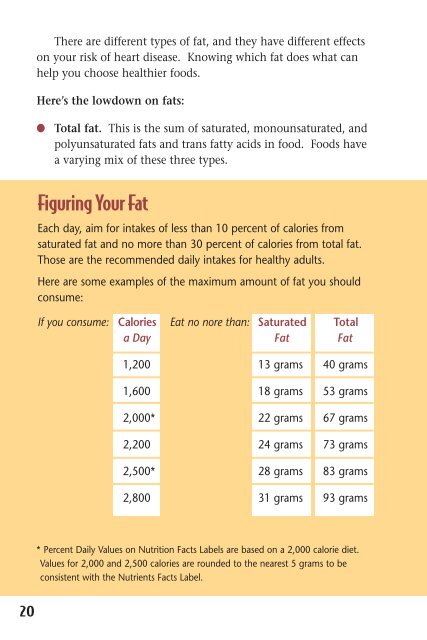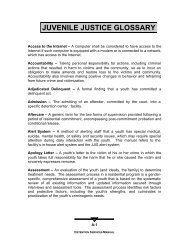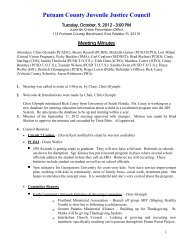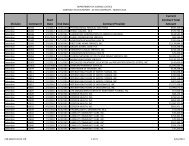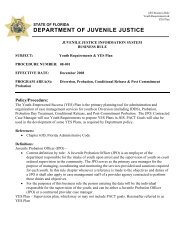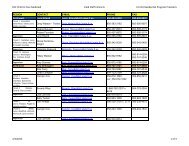Keep the Beat: Heart Healthy Recipes - National Heart, Lung, and ...
Keep the Beat: Heart Healthy Recipes - National Heart, Lung, and ...
Keep the Beat: Heart Healthy Recipes - National Heart, Lung, and ...
Create successful ePaper yourself
Turn your PDF publications into a flip-book with our unique Google optimized e-Paper software.
There are different types of fat, <strong>and</strong> <strong>the</strong>y have different effects<br />
on your risk of heart disease. Knowing which fat does what can<br />
help you choose healthier foods.<br />
Here’s <strong>the</strong> lowdown on fats:<br />
●<br />
Total fat. This is <strong>the</strong> sum of saturated, monounsaturated, <strong>and</strong><br />
polyunsaturated fats <strong>and</strong> trans fatty acids in food. Foods have<br />
a varying mix of <strong>the</strong>se three types.<br />
Figuring Your Fat<br />
Each day, aim for intakes of less than 10 percent of calories from<br />
saturated fat <strong>and</strong> no more than 30 percent of calories from total fat.<br />
Those are <strong>the</strong> recommended daily intakes for healthy adults.<br />
Here are some examples of <strong>the</strong> maximum amount of fat you should<br />
consume:<br />
If you consume: Calories Eat no nore than: Saturated Total<br />
a Day Fat Fat<br />
1,200 13 grams 40 grams<br />
1,600 18 grams 53 grams<br />
2,000* 22 grams 67 grams<br />
2,200 24 grams 73 grams<br />
2,500* 28 grams 83 grams<br />
2,800 31 grams 93 grams<br />
* Percent Daily Values on Nutrition Facts Labels are based on a 2,000 calorie diet.<br />
Values for 2,000 <strong>and</strong> 2,500 calories are rounded to <strong>the</strong> nearest 5 grams to be<br />
consistent with <strong>the</strong> Nutrients Facts Label.<br />
20


